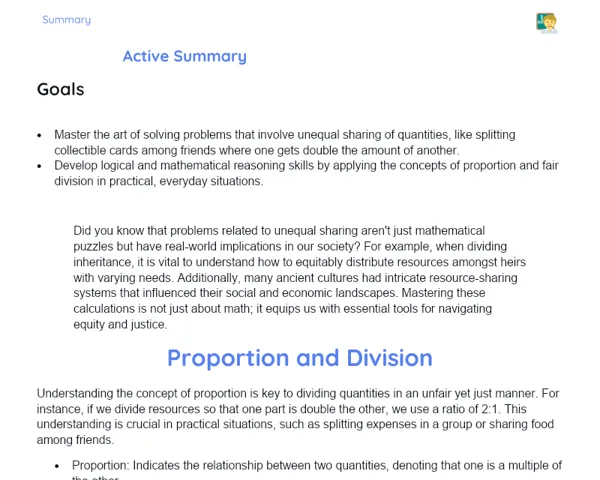Goals
1. Understand how to compose and decompose natural numbers that are less than 1000.
2. Identify the tens and units in natural numbers, such as 34, where 3 represents tens and 4 represents units.
Contextualization
Understanding the composition and decomposition of numbers is crucial in mathematics. Picture each number as a structure made of blocks of units, tens, and hundreds. Knowing how to unpack these numbers helps solve math problems more effectively and enhances our daily lives, like figuring out change while shopping or dividing items with friends.
Subject Relevance
To Remember!
Composition of Natural Numbers Less than 1000
The composition of natural numbers under 1000 entails building numbers out of hundreds, tens, and units. For instance, the number 234 comprises 2 hundreds, 3 tens, and 4 units. This is a foundational skill that helps understand how numbers are structured and manipulated for problem-solving.
-
Enables the creation of complex numbers from simpler components.
-
Aids in understanding the positional value of each digit.
-
Facilitates mathematical operations like addition and subtraction.
Decomposition of Natural Numbers Less than 1000
The decomposition of numbers under 1000 is essentially the reverse of composition. It involves breaking a number down into its parts: hundreds, tens, and units. For example, 582 can be decomposed into 5 hundreds, 8 tens, and 2 units. Mastering this is crucial for solving math problems effectively.
-
Simplifies mathematical calculations.
-
Enhances understanding of how numbers are structured and valued.
-
A practical skill applicable in everyday scenarios.
Identification of Tens and Units in Natural Numbers
Recognizing tens and units in natural numbers is a basic skill that counts how many groups of ten and how many individual units are in a number. For instance, in 47, there are 4 tens and 7 units. This foundational skill is key for both composing and decomposing numbers and essential for basic mathematical operations.
-
Lays the groundwork for understanding number composition and decomposition.
-
Facilitates basic mathematical operations.
-
Practical for numerous day-to-day activities.
Practical Applications
-
Accounting: Accounting professionals rely on number decomposition for financial reconciliations and audits.
-
Engineering: Engineers break down numbers to calculate material requirements and costs in complex projects.
-
Household Budget: Decomposing numbers aids in personal finance management, such as calculating expenses and savings.
Key Terms
-
Composition: The process of creating a number using hundreds, tens, and units.
-
Decomposition: The act of breaking a number down into its fundamental parts: hundreds, tens, and units.
-
Tens: Groups of ten units within a number.
-
Units: Individual digits in a number.
Questions for Reflections
-
In what ways can the ability to decompose numbers simplify solving complex mathematical problems?
-
How do you find yourself using number decomposition in daily life?
-
How could a solid understanding of tens and units benefit you in future careers?
Building Blocks Challenge
Use building blocks (like LEGO) to construct and decompose numbers, reinforcing your grasp of natural number decomposition under 1000.
Instructions
-
Form small groups of 2 to 3 students.
-
Get a list of natural numbers under 1000.
-
Use different colored blocks to represent hundreds, tens, and units.
-
Decompose each number into hundreds, tens, and units, and build it using the blocks.
-
Explain how you decomposed each number and how the blocks illustrate the hundreds, tens, and units.
-
Compare your constructions with other groups and discuss any differences and similarities.



